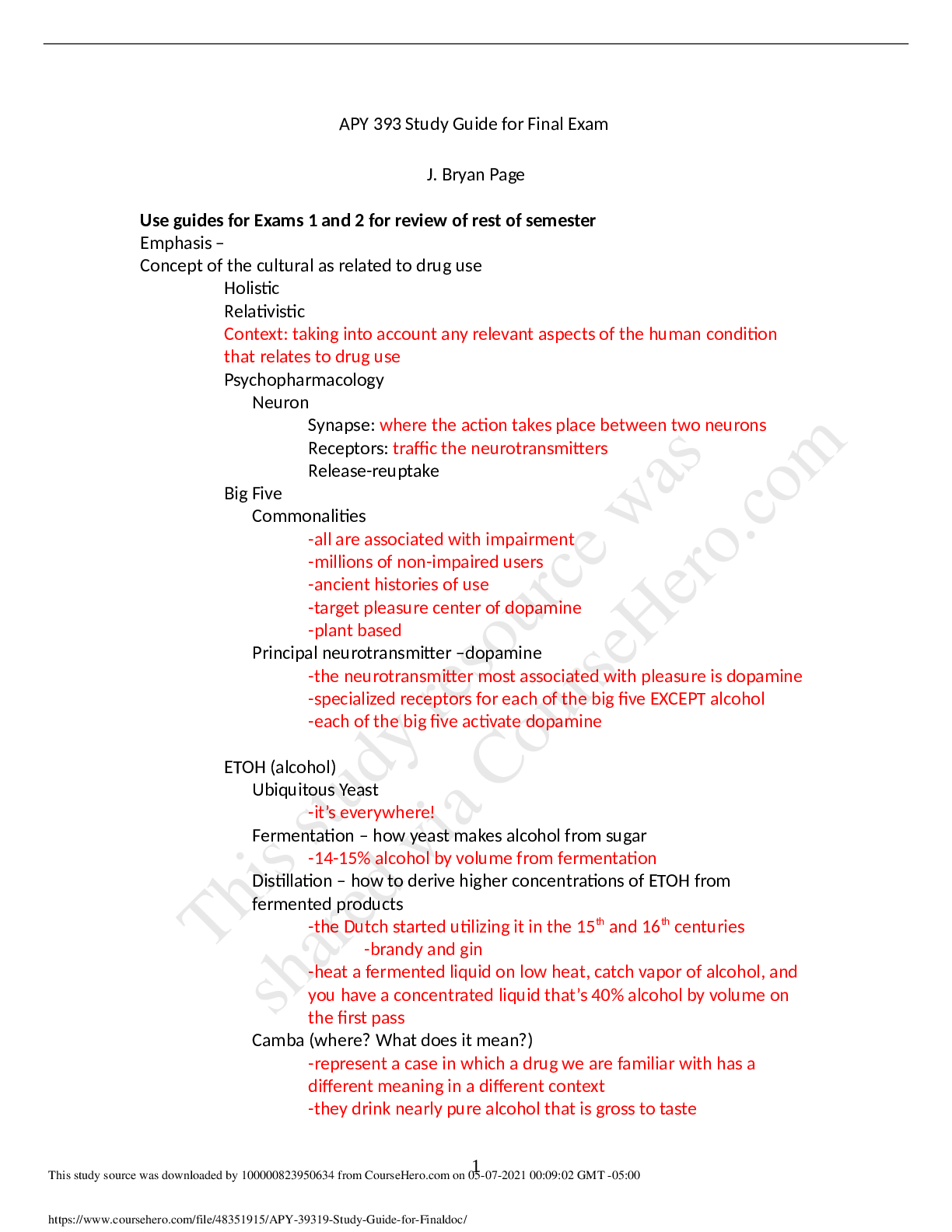*NURSING > STUDY GUIDE > Rasmussen College; NURSING 2047 Exam 1 pharmacology study guide-REVIEWED AND VERIFIED BY EXPERTS 202 (All)
Rasmussen College; NURSING 2047 Exam 1 pharmacology study guide-REVIEWED AND VERIFIED BY EXPERTS 2021
Document Content and Description Below
Exam 1 pharmacology study guide Pharmacokinetics: (what we do to drugs) the process of drug movement throughout the body that is necessary to achieve drug action. INCLUDES 4 PROCESSES: Absorption, D... istribution, Metabolism, and Excretion. Absoption: the movement of the drug into the bloodstream after administration. Absoption/dissolution: drugs in solid form disintegrate into small particles and combine with a liquid to form a solution. This need to happen in order for the drug to be absorbed into the GI tract into the bloodstream. Parenteral drugs DO NOT pass through the GI tract these include: eye drops eardrops, nasal sprays, inhalents, transdermal, topical, and sublingual medications. Drugs are absorbed faster in in acidic fluids with a PH of 1 or 2 rather than alkaline fluids with a PH 7 or greater. Very young and very old have less gastric acidity so drug absorption is generally slower for drugs absorbed in the stomach. Excipients: fillers and inert substances: are used in drug preparation to allow drug to take on a particular size and shape and to enhance drug dissolution. Enteric coated drugs (EC): resist disintegration in the gastric acids of the stomach, disintegration takes place when it reaches the alkaline environment of the SMALL INTESINE – these drugs can remain in the stomach for a long period of time so their effect might be delayed. DO NOT CRUSH enteric coated and sustained release capsules because it will alter the place and time of absorption. Passive transport: (does not require ATP) includes diffusion and facilitated diffusion: Diffusion- drugs move across the cell membrane from higher concentration to lower concentration. Facilitated Diffusion_ relies on a carrier protein to move the drug from areas of higher concentration to lower concentration. Active Transport: (Requires ATP) requires a carrier, such as an enzyme or protein to move the drug against a concentration gradient this requires ATP. Includes the process of PINOCYTOSIS- a process by which cells carry a drug across their membrane by engulfing the drug particles in a vesicle. CELL EATING Lipid Soluble Drugs: mucous membrane in the GI tract is composed of lipids and proteins such that lipid soluble drugs are able to pass rapidly through the mucous membrane. Water Soluble Drug: Need a carrier(enzyme or protein) to pass through the mucous membrane. (DRUGS THAT ARE LIPID SOLUBLE AND NON-IONIZED ARE ALWAYS ABSORBED FASTER THAN WATER SOLUBLE DRUGS) Things that affect Absorption: BLOOD FLOW, PAIN, STRESS, HUNGER, FASTING, FOOD,AND PH. IM: are absorbed faster in the muscles that have increased blood flow (deltoid) then those that do not (gluteous maximus). Faster absorption than SUBQ [Show More]
Last updated: 2 years ago
Preview 1 out of 7 pages

Buy this document to get the full access instantly
Instant Download Access after purchase
Buy NowInstant download
We Accept:

Reviews( 0 )
$7.00
Can't find what you want? Try our AI powered Search
Document information
Connected school, study & course
About the document
Uploaded On
May 12, 2021
Number of pages
7
Written in
Additional information
This document has been written for:
Uploaded
May 12, 2021
Downloads
0
Views
65

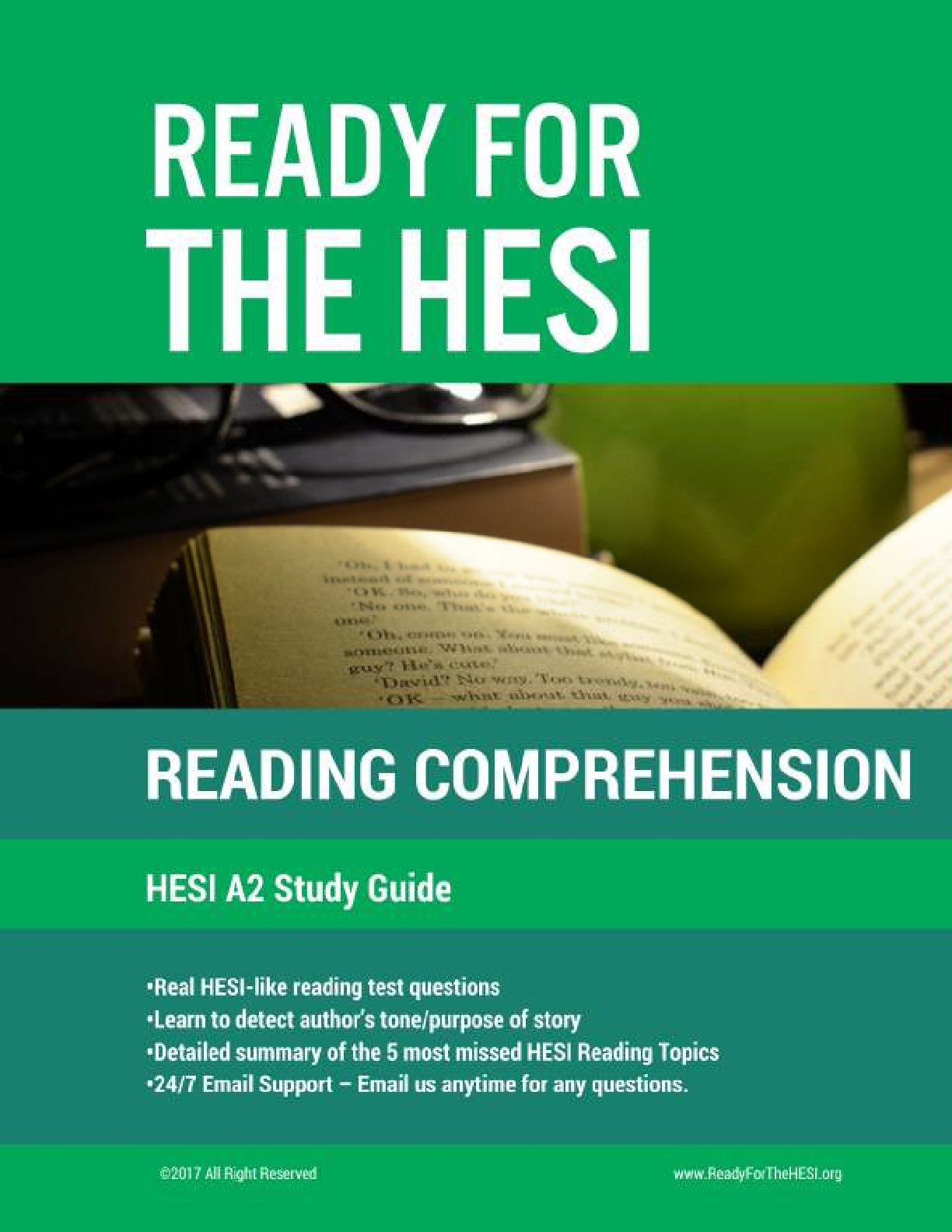

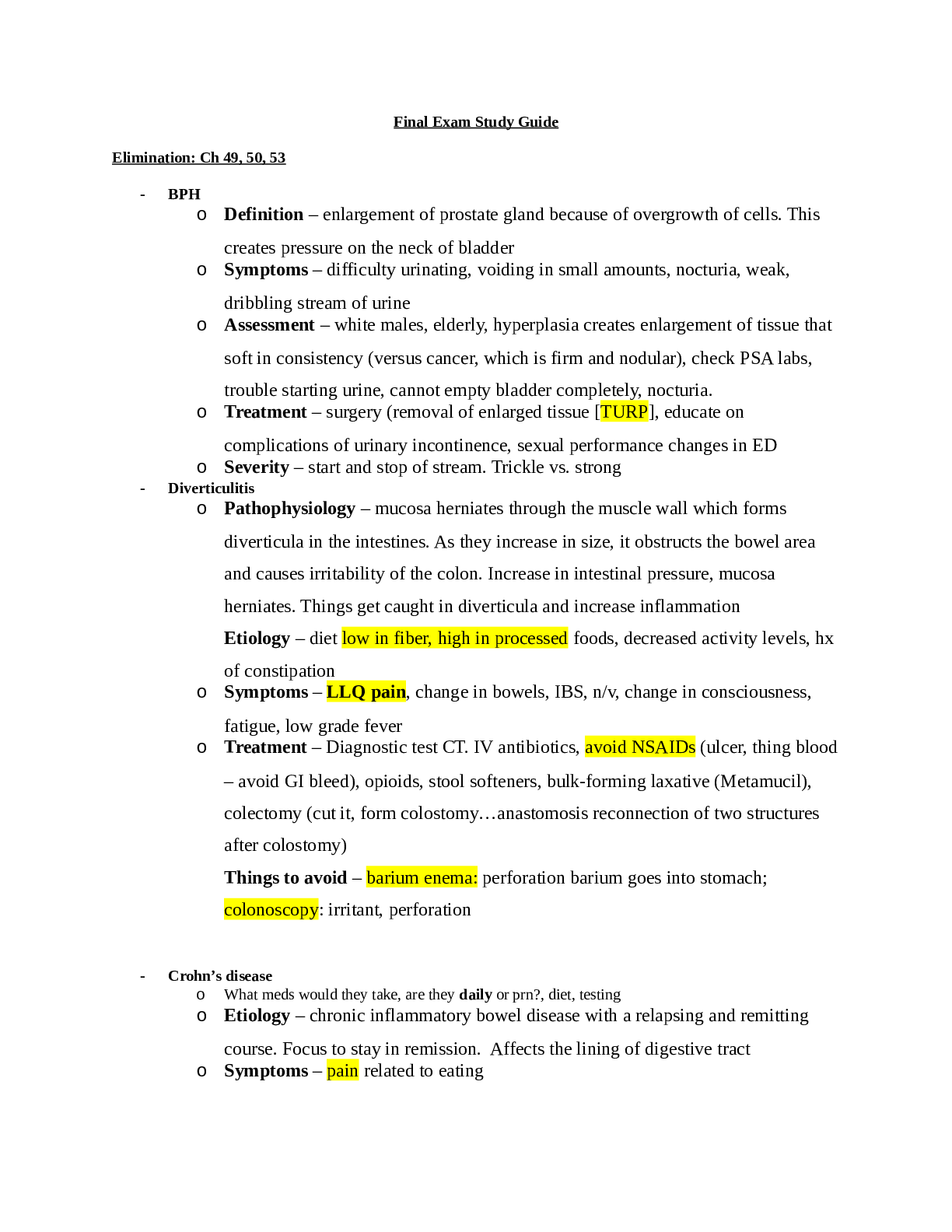
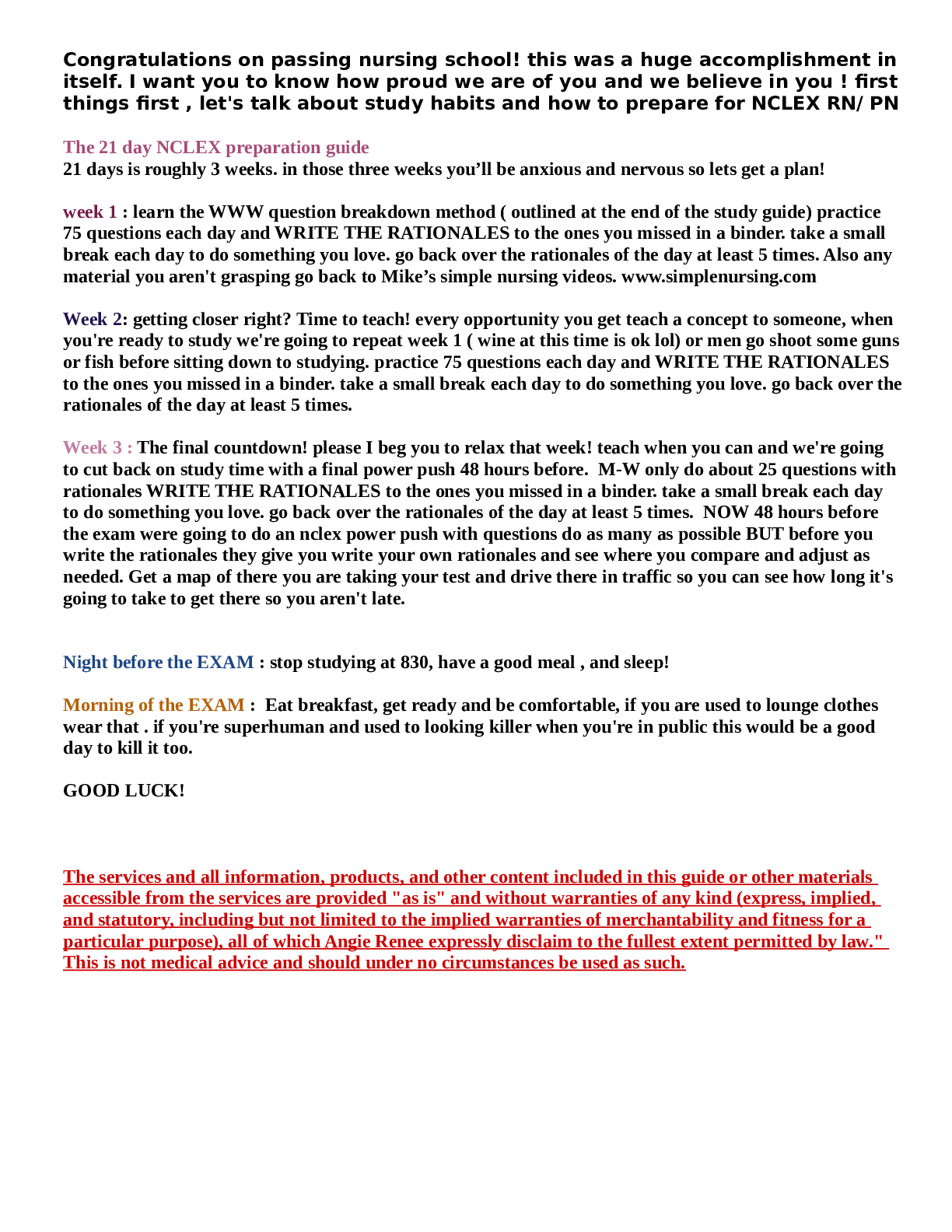





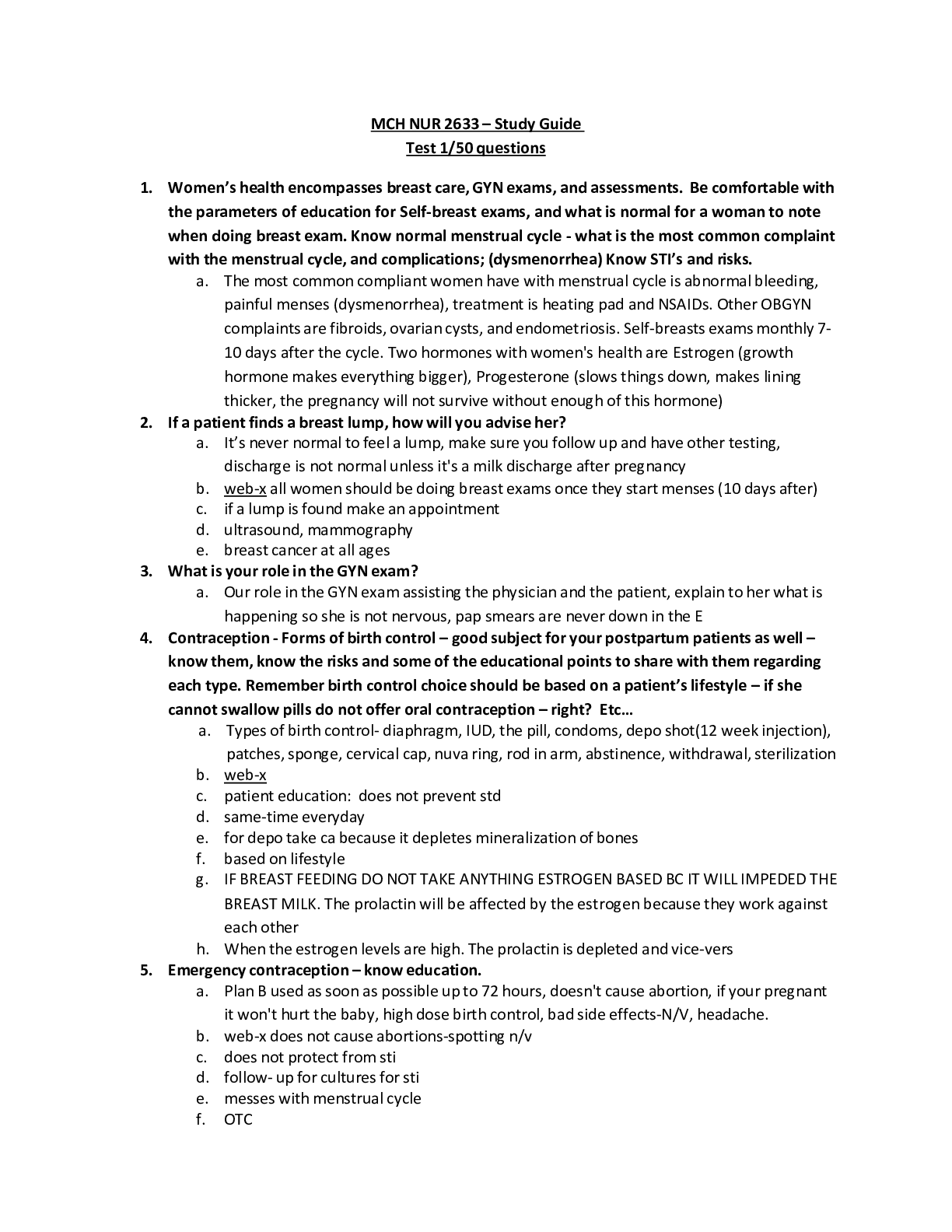
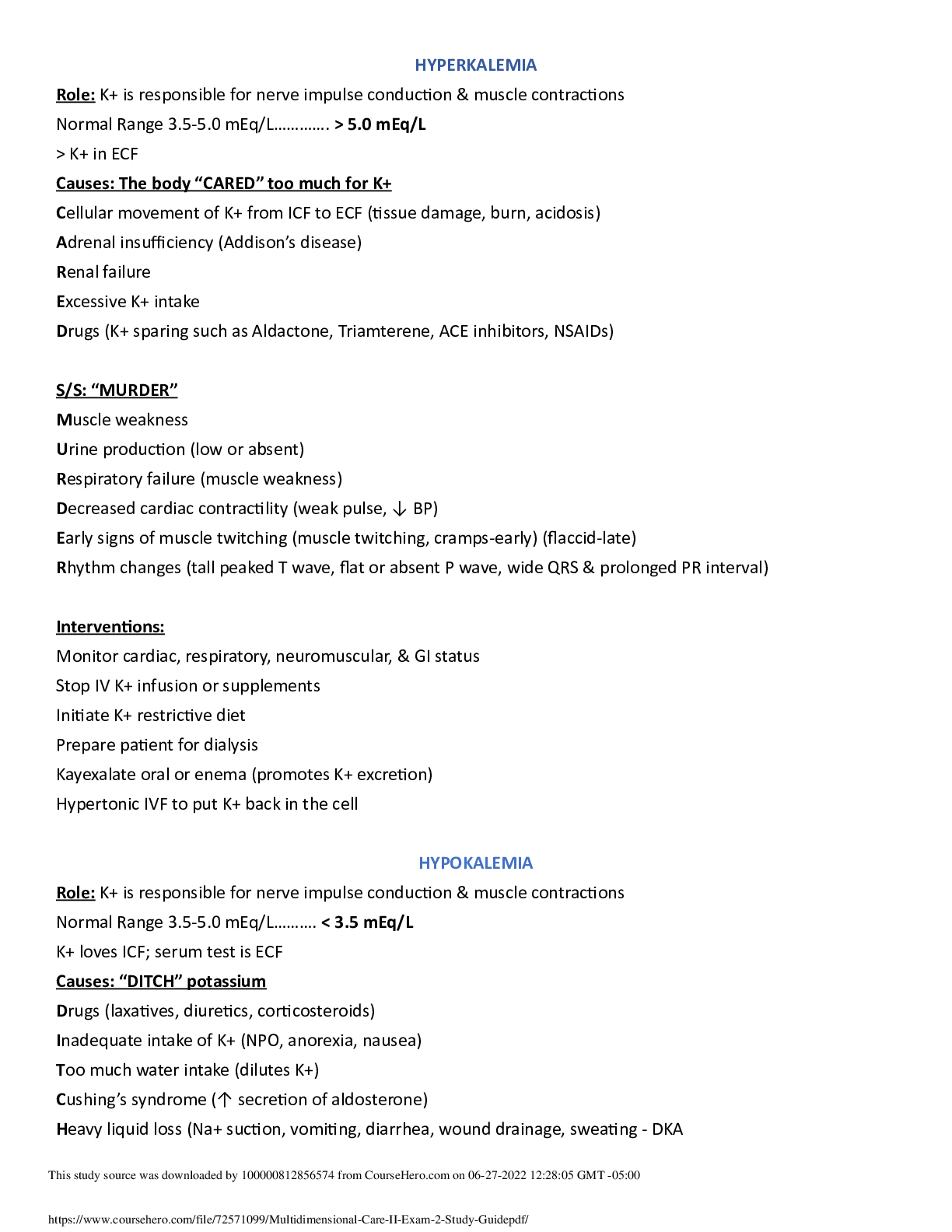

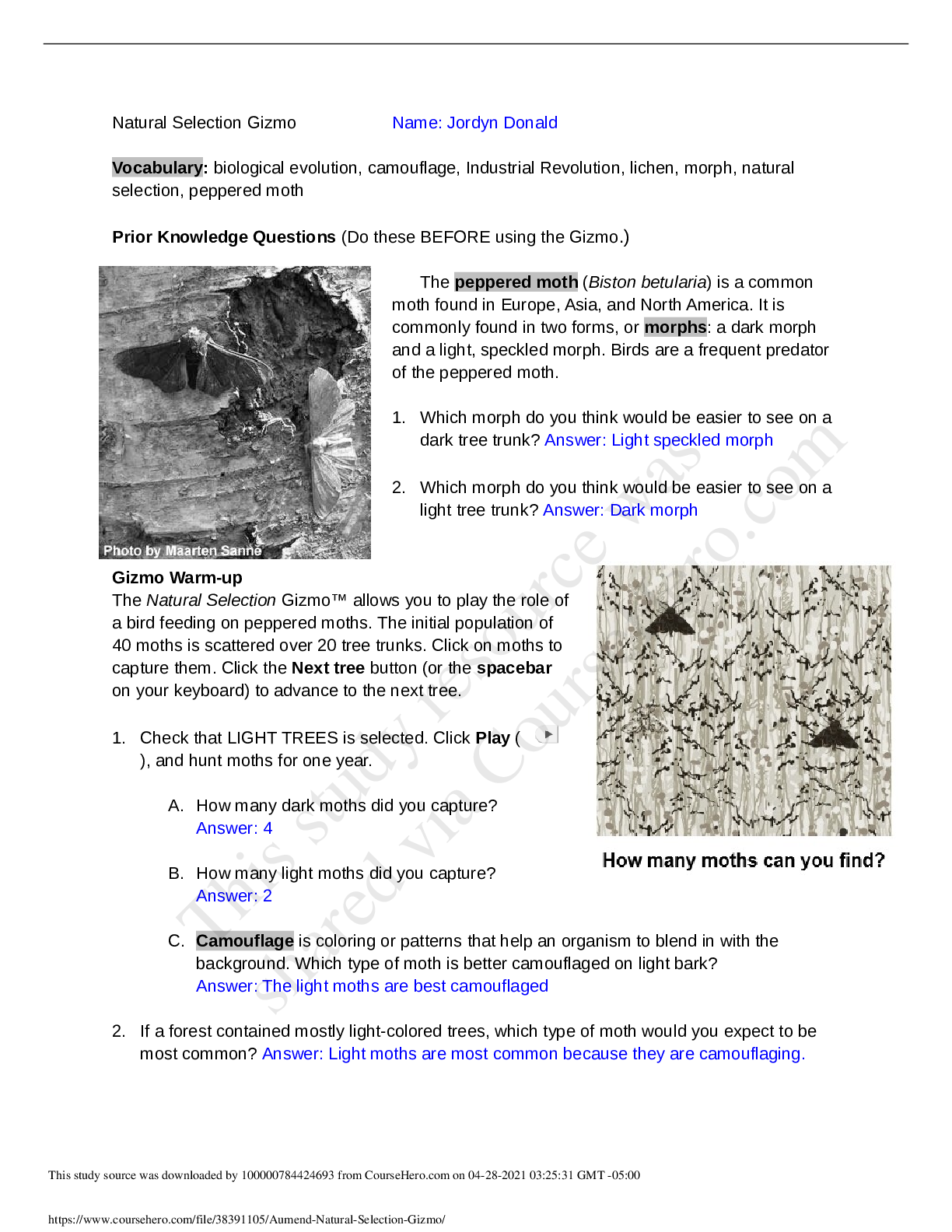

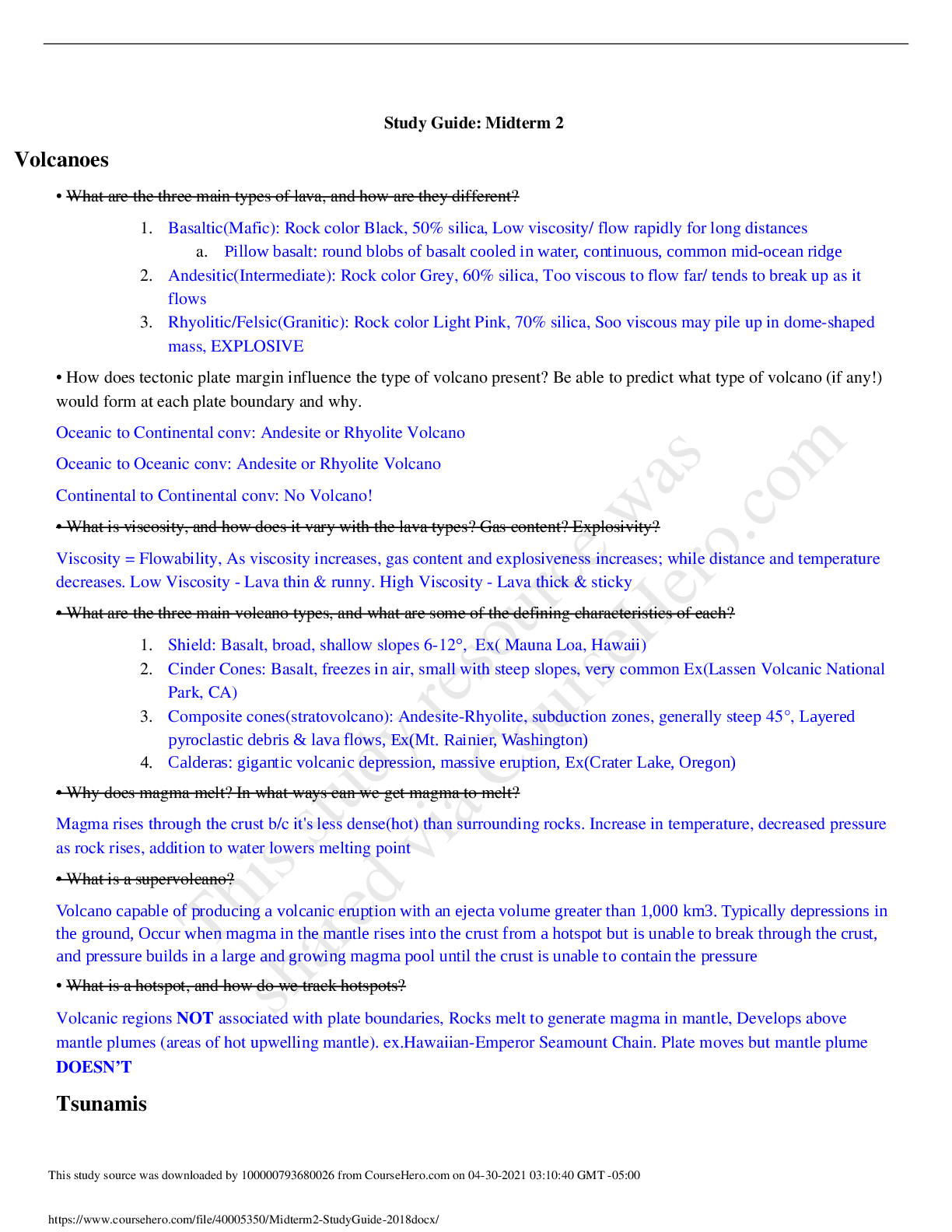
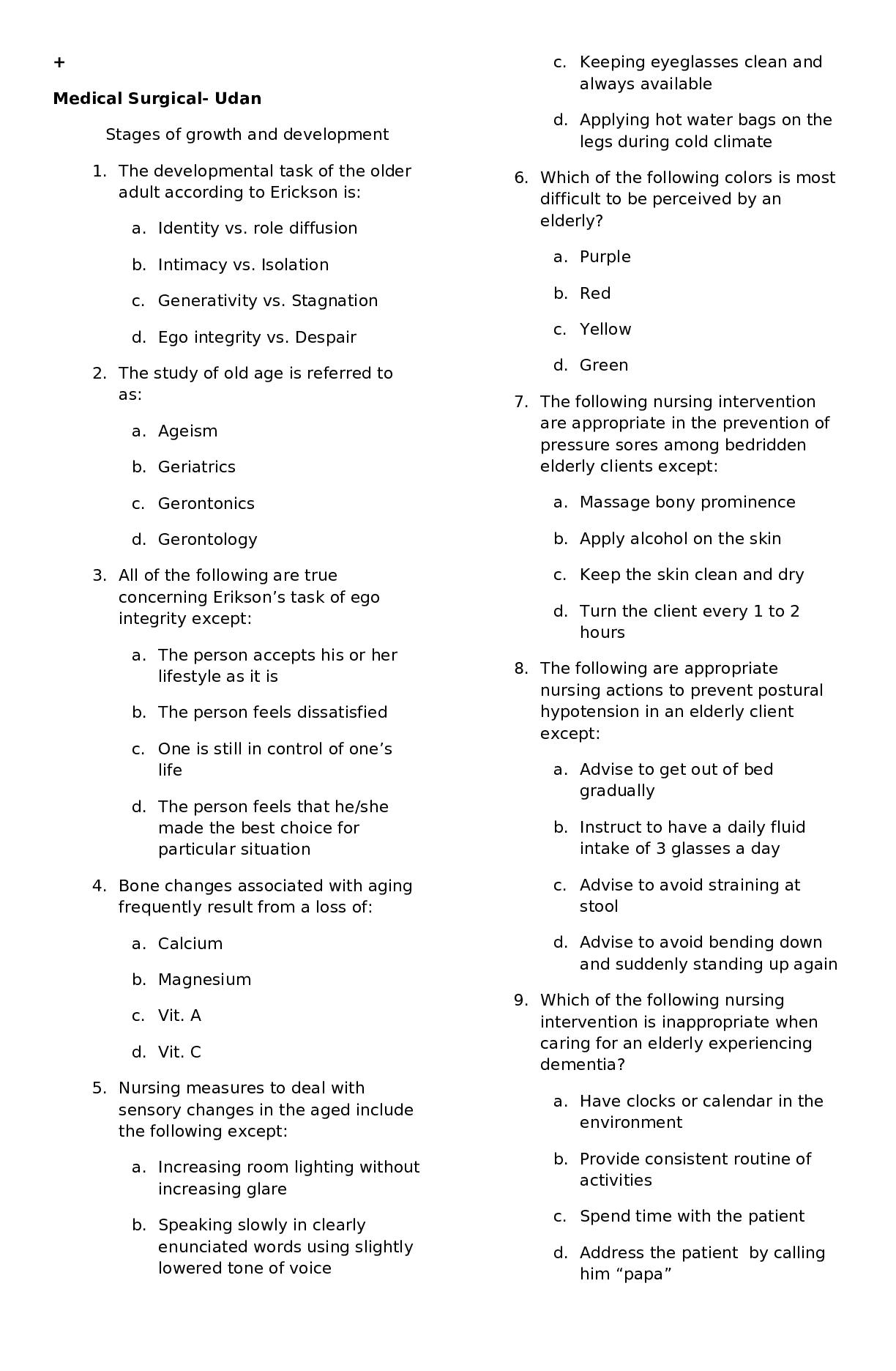

.png)





